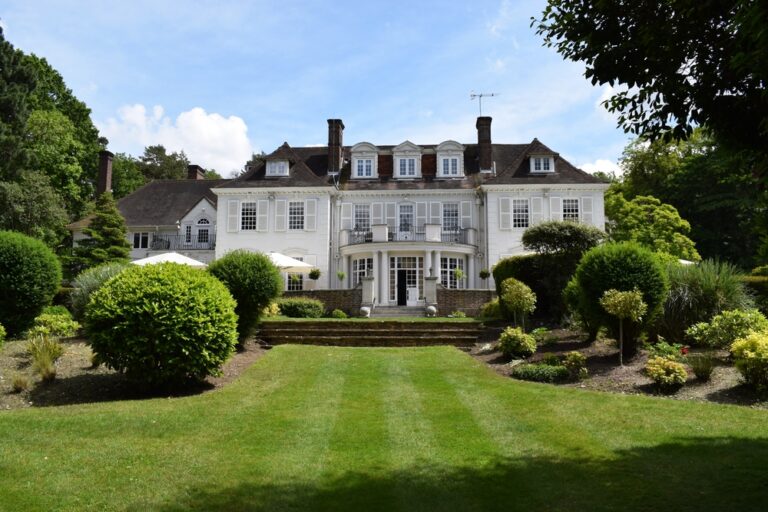Would you spend £195,000 more than the UK’s average property price on your next home because it was near an ‘Outstanding’-rated school?
According to research from September 2020, properties in catchments with a school labelled ‘Outstanding’ by education watchdog Ofsted commanded, on average, a price tag of £446,919 – almost £200,000 more than the UK’s average property price at the time.
In London, research as recently as 2019 suggested parents were prepared to pay as much as £70,000 more for a property if it was in the catchment area for a top state school. All of which means school catchments remain hugely important for family property buyers.
But getting to grips with school catchments in London, and the rules that surround them, can be tricky.
Our guide, however, has the answers you’re looking for…
The rules on London school catchment areas
Catchment rules can vary from area to area, so it’s important to find out how things work where you’re looking to buy in London.
It’s also worth pointing out that simply living in a school’s catchment area doesn’t mean your child is guaranteed a place at that school.
Schools will almost always give places to siblings of current pupils first, before offering remaining places to those who live in catchment.
So, if your child happens to fall in a year group where lots of siblings are offered places, they could still miss out even if you live on the right road.
Other factors that can sometimes affect school applications include:
• Whether your child went to one of the school’s official feeder schools
• Your child’s religion
• Your child’s ability academically
• Any additional needs your child may have
How school catchments work
Most people assume a school catchment area is an imaginary ring around a school and any road that falls inside that ring is ‘in catchment’.
But it’s more complicated than that. In fact, there are four different types of catchment process used by schools in London:
• Straight Line Catchment
• Walking Distance Catchment
• Priority Admission Area
• Nearest School Catchment
Straight Line Catchment
Straight Line Catchment is actually a circular catchment area around a school and properties that fall within this circle are classed as ‘in catchment’.
So, if the school has 40 places remaining after siblings have been offered places, it will offer those to applicants within that ‘circle’ catchment area.
Walking Distance Catchment
Walking Distance Catchment works in a similar way to Straight Line Catchment, but rather than simply forming a circle around the school, applicants are assessed by the walking distance of their home to the school.
This is done along a set walking route, which is established by the local authority and is usually what is deemed to be the shortest ‘safe’ walking route to school.
Priority Admission Area
Priority Admission Areas (PAA) are fixed areas where pupils are admitted to a school as a priority, before any remaining places are offered to other applicants from outside of the area.
Siblings from within the PAA are usually offered places first, followed by other children from within the PAA.
Siblings living outside of the PAA are then offered any remaining places, before other children from outside of the PAA if any further places remain.
Nearest School Catchment
Schools using the Nearest School Catchment process prioritise applicants for whom the school is their nearest.
This means the area around the school is cut up into different spaces and is mainly used when many schools exist within close proximity of one another.
What is the purpose of a catchment area?
Catchment areas are in place to help ensure an even and fair spread of pupils across all schools.
Catchment areas are judged as the fairest way to deal with school applications, although they can be complicated and sometimes see pupils miss out on their chosen schools due to various issues of ‘red tape’.
How long do you have to live in a catchment area?
Most schools usually have a cut-off date by which time you must be living in a property as your main residence in order for it to be considered on a school application. This is to stop parents fraudulently claiming school places by either:
• Renting a property in catchment while also keeping another main residence
• Using a relative’s address on a school application because it is in catchment
Can I send my child to a school outside my catchment area?
There are no rules that say you cannot apply for a school place outside of your catchment area.
However, if applications for that school are strong from families who already have a child at the school, or from within the school’s catchment area, your chances of securing a place will be greatly reduced.
How often do catchment areas change?
School catchment areas change most years, although this depends on which catchment process each school is using.
Those using the Straight Line Catchment or Walking Distance Catchment processes will determine the following year’s catchment area by how far away the final child to be offered a place lived.
That means if a child from outside of the school’s catchment area was given a place, the following year’s catchment area will be larger.
The best London areas to move to for primary and secondary schools
London is home to more than 300 primary schools rated ‘Outstanding’ by Ofsted, meaning there is plenty of choice for parents wanting to live in top catchment areas.
That also means there’s plenty of competition for great properties, however.
Here are our top five areas to live in for ‘Outstanding’ primary and secondary schools…
Bethnal Green
Bethnal Green has become more and more popular with family renters and buyers over the years and it’s easy to see why.
The area is home to three ‘Outstanding’ primary schools:
• Globe Primary School
• Mowlem Primary School
• Thomas Buxton Primary School
Four secondary schools also carry Ofsted’s ‘Outstanding’ rating:
• Morpeth
• Swanlea
• Mulberry Academy
• Mulberry School for Girls
Average property price in Bethnal Green: £517,807
Find out more about living in Bethnal Green.
Enfield
Enfield has always been one of London’s best boroughs for families, thanks to great properties and superb transport links into the city.
It’s schools a re pretty great, too, with ‘Outstanding’ primaries including:
• St George’s RC
• Eversley
• Worcesters
• Forty Hill CofE
• Enfield Heights
Enfield is also home to two ‘Outstanding’ secondary schools:
• Enfield County School for Girls
• Highlands Secondary School
Average property price in Enfield: £492,657
Find out more about living in Enfield.
Finchley
Finchley’s stock of spacious, rock-solid 1930s homes alongside rows of Victorian and Edwardian terraces, make it a great place for families to put down roots.
When it comes to schools, too, Finchley is an area with plenty of choice. Its ‘Outstanding’ primary schools include:
• St Mary’s CofE
• Manorside
• Our Lady of Lourdes RC
• Moss Hall Infants
• Brooklands Infants
• Brooklands Junior
• Northside
The area’s ‘Outstanding’ secondaries, meanwhile, are:
• Hasmoneon High for Boys
• Wren Academy CofE
• Compton
• St Michael’s RC for Girls
Average property price in Finchley: £648,975
Find out more about living in Finchley.
Harrow
When it comes to areas famed for education, Harrow is one of the best known.
No fewer than four British Prime Ministers were educated at the prestigious Harrow School, but the area doesn’t stop there when it comes to superb schools.
Harrow’s ‘Outstanding’ primary schools include:
• St Anselm’s RC
• Marlborough
• Belmont
• Byron Court
• St Joseph’s RC
• Mount Stewart Junior
• Alexandra
• Newton Farm
• Heathland
• Glebe
• St Bernadette’s RC
Its secondary schools are superb, too, with ‘Outstanding’ ones in:
• Whitmore High
• Sacred Heart Language College
• Nower Hill High
• Claremont High
• Bentley Wood High
Average property price in Harrow: £484,493
Find out more about living in Harrow.
Tottenham
Currently enjoying a period of regeneration, Tottenham is a North London hotspot on the up.
Its schools have always impressed, though, and this is one of the reasons why the area has long been popular with families.
The area’s ‘Outstanding’ primary schools include:
• Belmont Junior
• Holmleigh Primary
• Springfield Community Primary
• Crowland Primary
For secondary schools, Cladesmore Community comes out on top with Ofsted’s best rating.
Average property price in Tottenham: £447,198
Find out more about living in Tottenham.
Further reading…
If you’re looking to buy a new home and catchment areas are high on your wish list, you may need to sell quickly in order to move before the next school application deadline.
Auction can be a great way to sell your home faster, so take a look at our guide to selling this way.







